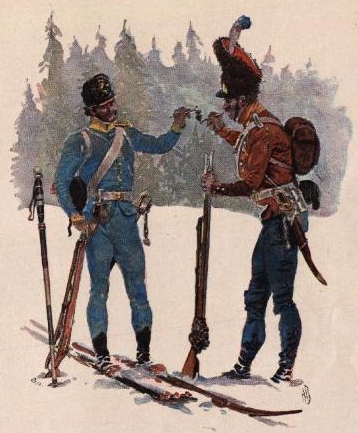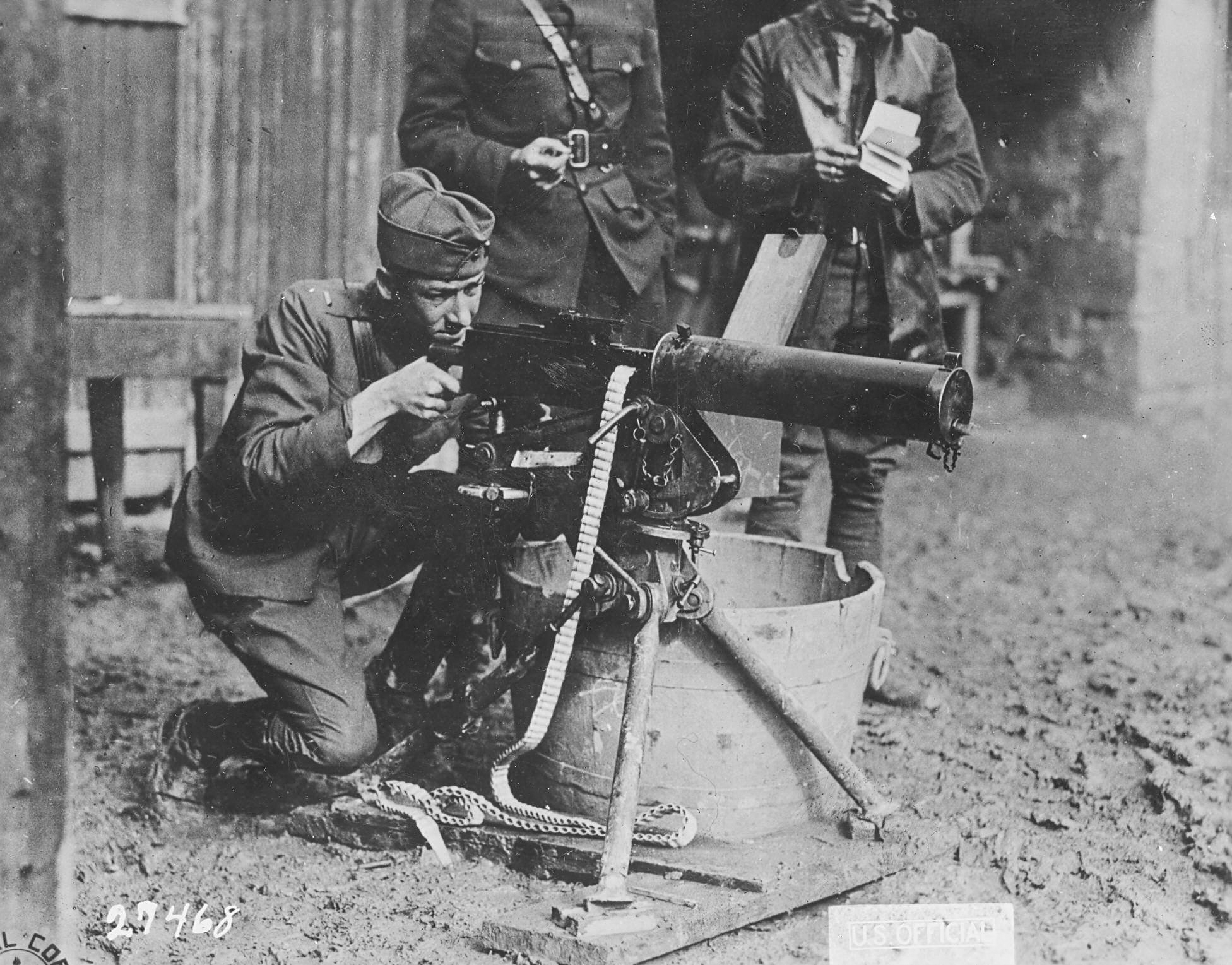|
List Of World War II Weapons Of Norway
This is a list of Norwegian weapons of World War II. This list will consist of weapons employed by the Norwegian army during the Norwegian campaign or the invasion of Norway by Nazi Germany during World War II. Norwegian resistance weapons have been put in a separate category to avoid confusion with those used by the Norwegian army during the Norwegian campaign. Small arms Sidearms * Colt Kongsberg M1914 ''Norwegian licensed production of the American Colt M1911'' * Walther P38 ''Norwegian resistance'' Rifles * Krag–Jørgensen M1894 * Krag-Petersson ''reserves'' * Kammerlader M1860/67 ''reserves'' * Jarmann M1884 ''reserves'' * Remington M1867 ''reserves'' * Mauser Karabiner 98k ''Norwegian resistance'' * Lee-Enfield ''Norwegian resistance'' * M1 Carbine ''Norwegian resistance'' * M1917 Enfield ''Norwegian resistance'' * M1 Garand ''Norwegian resistance'' Submachine guns * Sten Mk 2 ''Norwegian resistance'' * Suomi KP/-31 ''used by volunteers in Finland'' ... [...More Info...] [...Related Items...] OR: [Wikipedia] [Google] [Baidu] |
Norwegian Army
The Norwegian Army ( no, Hæren) is the land warfare service branch of the Norwegian Armed Forces. The Army is the oldest of the Norwegian service branches, established as a modern military organization under the command of the King of Norway in 1628. The Army participated in various continental wars during the 17th, 18th, and 19th centuries as well, both in Norway and abroad, especially in World War II (1939–1945). It constitutes part of the Norwegian military contribution as a charter member of the North Atlantic Treaty Organization (NATO) since 1949. History Creation of the Norwegian Army After the Kalmar War broke out in 1611, the Danish-Norwegian king, Christian IV tried to revive the leidang, with dire results. As the Norwegian peasantry had not been armed or trained in the use of arms for nearly three centuries, they were not able to fight. Soldiers deserted or were captured. The soldiers had to participate in military drills, while providing supplementary labor to ... [...More Info...] [...Related Items...] OR: [Wikipedia] [Google] [Baidu] |
M1 Garand
The M1 Garand or M1 rifleOfficially designated as U.S. rifle, caliber .30, M1, later simply called Rifle, Caliber .30, M1, also called US Rifle, Cal. .30, M1 is a semi-automatic rifle that was the service rifle of the U.S Army during World War II and the Korean War. The rifle is chambered for the .30-06 Springfield cartridge and is named after its Canadian Americans, Canadian-American designer, John Garand. It was the first standard-issue autoloading rifle for the United States. By most accounts, the M1 rifle performed well. General George S. Patton called it "the greatest battle implement ever devised". The M1 replaced the bolt-action M1903 Springfield as the U.S.' service rifle in 1936, and was itself replaced by the selective fire, selective-fire M14 rifle on March 26, 1958. Pronunciation Sources differ on the pronunciation of the M1 Garand. Some, such as General Julian Hatcher, Julian Hatcher's ''The Book of the Garand'' (1948), give , identical to the pronunciation of Joh ... [...More Info...] [...Related Items...] OR: [Wikipedia] [Google] [Baidu] |
Bren Light Machine Gun
The Bren gun was a series of light machine guns (LMG) made by Britain in the 1930s and used in various roles until 1992. While best known for its role as the British and Commonwealth forces' primary infantry LMG in World War II, it was also used in the Korean War and saw service throughout the latter half of the 20th century, including the 1982 Falklands War. Although fitted with a bipod, it could also be mounted on a tripod or be vehicle-mounted. The Bren gun was a licensed version of the Czechoslovak ZGB 33 light machine gun which, in turn, was a modified version of the ZB vz. 26, which British Army officials had tested during a firearms service competition in the 1930s. The later Bren gun featured a distinctive top-mounted curved box magazine, conical flash hider, and quick change barrel. The name ''Bren'' was derived from Brno, the Czechoslovak city in Moravia, where the Zb vz. 26 was designed (in the Zbrojovka Brno Factory) and Enfield, site of the British Royal Small A ... [...More Info...] [...Related Items...] OR: [Wikipedia] [Google] [Baidu] |
MG 34
The MG 34 (shortened from German: ''Maschinengewehr 34'', or "machine gun 34") is a German recoil-operated air-cooled general-purpose machine gun, first tested in 1929, introduced in 1934, and issued to units in 1936. It introduced an entirely new concept in automatic firepower – the ''Einheitsmaschinengewehr'' (Universal machine gun) – and is generally considered the world's first general-purpose machine gun (GPMG). Both the MG 34 and MG 42 were erroneously nicknamed "Spandau" by Allied troops, a carryover from the World War I nickname for the MG 08, which was produced at the Spandau Arsenal. The versatile MG 34 was chambered for the full-power 7.92×57mm Mauser rifle cartridge, and was arguably the most advanced machine gun in the world at the time of its deployment. The MG 34 was envisaged and well developed to provide portable light and medium machine gun infantry cover, anti-aircraft coverage, and even sniping ability. Its combination of exceptional mobility – being ... [...More Info...] [...Related Items...] OR: [Wikipedia] [Google] [Baidu] |
Eriksen M/25
The Eriksen M/25 was a prototype light machine gun designed and built by the Norwegian gunsmith Johan Emil Barbat Eriksen in 1925. A single prototype of the weapon was manufactured and saw service with the Norwegian Army during the Norwegian Campaign in 1940. Design details Johan Emil Barbat Eriksen was employed by the Norwegian armaments factory Kongsberg Våpenfabrikk and worked on several automatic weapon projects in his spare time, one of which was the Eriksen M/25. The Eriksen M/25 was long, with a barrel length of . It weighed and fired 6.5×55mm rounds. The rate of fire is unknown. The design of the action of the weapon combined functions of several different machine guns of the same era. The action consisted of a sliding breech block connected to a rotary crank, which in turn was operated by an off-set connecting rod, driven by the piston rod of the weapon. The feeding system was also unconventional, utilizing a box magazine mounted on the left side of the gun, h ... [...More Info...] [...Related Items...] OR: [Wikipedia] [Google] [Baidu] |
MG 13
The MG 13 (shortened from German Maschinengewehr 13) is a German light machine gun developed by converting the Dreyse Model 1918 heavy water-cooled machine gun into an air-cooled version. History Dreyse Model 1918 Machinegun: In 1907 Louis Schmeisser of Erfurt patented a machine-gun named in honor of the inventor of the needle gun by the heads of the factory where it was made which was founded by Dreyse. The Dreyse machine-gun was a heavy, usually tripod mounted, belt-fed and water cooled machine-gun. The 1907 model was succeeded by the 1912 and later 1918 models. It was ordered the Model 1918 to be modernized by the company Simson in Suhl. It became the MG13. Usage The MG 13 was introduced into service in 1930, where it served as the standard light machine gun until 1935. It was superseded by the MG 34 and then later the MG 42. An unusual feature of the MG 13 was its double-crescent trigger, which provided select fire capability without the need for a fire mode selector switc ... [...More Info...] [...Related Items...] OR: [Wikipedia] [Google] [Baidu] |
Kg M/40 Automatic Rifle
The Kg m/40 was an automatic rifle used by the Swedish Army during the 1940s. A small number were also manufactured in Germany by Knorr-Bremse for the ''Wehrmacht'' and '' Waffen-SS'', under the name MG35/36A, though they were mostly nicknamed "the Knorr-Bremse". The German models were chambered for the higher pressure 7.92×57mm Mauser and weighed 10 kg. The Swedish Kg m/1940 loaded its magazine from the side, similar to the FG 42. It also had the ability to use 20 round magazines from Swedish type M1918 BARs. In 1940 there was a desperate need for machine guns in Sweden. The production rate of Kg m/37 (Swedish BAR variant) was rather slow and not suitable for modern production. In 1940, a LMG was accepted called system SAV (''Svenska Automat Vapen'' = Swedish Automatic Weapons). The design was made by a German called Hans Lauf at ''Magdeburg Maschinenfabrik'' AG. However the patent starts out from 22 November 1933 in Sweden. He had two fellow applicants from Sweden: Iva ... [...More Info...] [...Related Items...] OR: [Wikipedia] [Google] [Baidu] |
M1918 Browning Automatic Rifle
The Browning Automatic Rifle (BAR) is a family of American automatic rifles and machine guns used by the United States and numerous other countries during the 20th century. The primary variant of the BAR series was the M1918, chambered for the .30-06 Springfield rifle cartridge and designed by John Browning in 1917 for the American Expeditionary Forces in Europe as a replacement for the French-made Chauchat and M1909 Benét–Mercié machine guns that US forces had previously been issued. The BAR was designed to be carried by infantrymen during an assault Article by Maxim Popenker, 2014. advance while supported by the sling over the shoulder, or to be fired from the hip. This is a concept called " walking fire"—thought to be necessary for the individual soldier during trench warfare. The BAR never entirely lived up to the original hopes of the War Department as either a rifle or a machine gun. The US Army, in practice, used the BAR as a light machine gun, often fired from a ... [...More Info...] [...Related Items...] OR: [Wikipedia] [Google] [Baidu] |
Hotchkiss Mle 1914 Machine Gun
The Mle 1914 Hotchkiss machine gun chambered for the 8mm Lebel cartridge became the standard machine gun of the French Army during the latter half of World War I. It was manufactured by the French arms company Hotchkiss et Cie, which had been established in the 1860s by American industrialist Benjamin B. Hotchkiss. The gas-actuated Hotchkiss system was first formulated in 1893 by Odkolek von Ujezda and improved into its final form by Hotchkiss armament engineers, American Laurence Benét and his French assistant Henri Mercié. The Mle 1914 was the last version of a series of nearly identical Hotchkiss designs : the Mle 1897, Mle 1900 and the Mle 1909. The Hotchkiss Mle 1914 became the French infantry standard in late 1917, replacing the unreliable St. Étienne Mle 1907. The American Expeditionary Forces (AEF) in France also purchased 7,000 Mle 1914 Hotchkiss machine guns in 8mm Lebel, and used them extensively at the front in 1917 and 1918. Hotchkiss heavy machine guns, some ... [...More Info...] [...Related Items...] OR: [Wikipedia] [Google] [Baidu] |
Browning M1917A1
The M1917 Browning machine gun is a heavy machine gun used by the United States armed forces in World War I, World War II, the Korean War, and the Vietnam War; it has also been used by other nations. It was a crew-served, belt-fed, water-cooled machine gun that served alongside the much lighter air-cooled Browning M1919. It was used at the battalion level, and often mounted on vehicles (such as a jeep). There were two main iterations: the M1917, which was used in World War I and the M1917A1, which was used thereafter. The M1917, which was used on some aircraft as well as in a ground role, had a cyclic rate of 450 rounds per minute. The M1917A1 had a cyclic rate of 450 to 600 rounds per minute. Design and development In 1900, John Moses Browning filed a patent for a recoil-powered automatic gun. Browning did not work on the gun again until 1910, when he built a water-cooled prototype of the 1900 design. Although the gun worked well, Browning improved the design slightly. Brown ... [...More Info...] [...Related Items...] OR: [Wikipedia] [Google] [Baidu] |






